INSTITUT SUPERIEUR D'ANTHROPOLOGIE
INSTITUTE OF ANTHROPOLOGY
ONLINE COURSES / COURS A DISTANCE
SPRING TERM : APRIL 2016
REGISTER NOW
CHINE – 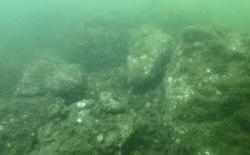
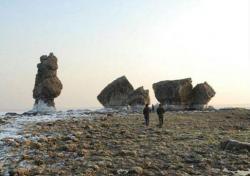 Suizhong - Archaeologists believe they may have found a submerged seaside palace built more than 2,200 years ago by China’s first emperor, Ying Zheng, mainland media reports. The building, thought to date back to the Qin dynasty (221-207BC), was discovered under the sea off the coast of Suizhong county, in Liaoning province, researchers from Liaoning and Beijing told the Liaoshen Evening News. The largest discovery was a 60-metre wide square, formed of large stones, which could be the foundations of a large platform for religious sacrifices or other important activities, the archaeologists said. They also found the remains of a stone road running through the palace. Local fishermen said they had previously found ancient coins and ceramics on the seabed, while some of the stone walls were clearly visible at low tide. Ying Zheng, also known as Qin Shihuang, was China’s first ruler, who united the nation by conquering all of the warring states in 221BC. He is said to have visited the East China Sea coast three times before his death in 210BC in his futile quest for immortality.
Suizhong - Archaeologists believe they may have found a submerged seaside palace built more than 2,200 years ago by China’s first emperor, Ying Zheng, mainland media reports. The building, thought to date back to the Qin dynasty (221-207BC), was discovered under the sea off the coast of Suizhong county, in Liaoning province, researchers from Liaoning and Beijing told the Liaoshen Evening News. The largest discovery was a 60-metre wide square, formed of large stones, which could be the foundations of a large platform for religious sacrifices or other important activities, the archaeologists said. They also found the remains of a stone road running through the palace. Local fishermen said they had previously found ancient coins and ceramics on the seabed, while some of the stone walls were clearly visible at low tide. Ying Zheng, also known as Qin Shihuang, was China’s first ruler, who united the nation by conquering all of the warring states in 221BC. He is said to have visited the East China Sea coast three times before his death in 210BC in his futile quest for immortality.
http://www.scmp.com/news/china/society/article/1903023/undersea-treasure-archaeologists-find-submerged-qin-dynasty
GRECE – 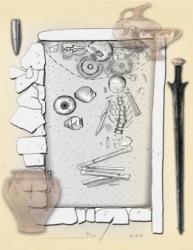 Iolkos - Iolkos, the northernmost Mycenaean centre in the periphery of the Mycenaean world, was first identified through the finds of the excavations conducted since 1956, at the sites of Kastro (Palia), Dimini and Pefkakia. At the site of Kastro was excavated part of the Mycenaean settlement and a large section of the cemetery. At Dimini, was uncovered an extensive and well organised Mycenaean settlement, including an administrative centre, and at Pefkakia, a seaside settlement, with commercial, workshop and even religious activities. It is now believed that these three neighbouring sites comprise what is known as Iolkos, the northernmost Mycenaean centre in Greece. The cemetery of the Mycenaean settlement at the site of Kastro, in Volos, is the only properly excavated funerary site, not only in the area of Volos but also in Thessaly as a whole, as regards both the number and the early date of the graves. The geographical location of the settlement, lying at a crossroads as regards communications and trade, both with inland Thessaly and with the Aegean and various coastal areas of central and southern Greece, was a strong incentive for the early presence of Mycenaeans, as attested by the extant warrior graves.
Iolkos - Iolkos, the northernmost Mycenaean centre in the periphery of the Mycenaean world, was first identified through the finds of the excavations conducted since 1956, at the sites of Kastro (Palia), Dimini and Pefkakia. At the site of Kastro was excavated part of the Mycenaean settlement and a large section of the cemetery. At Dimini, was uncovered an extensive and well organised Mycenaean settlement, including an administrative centre, and at Pefkakia, a seaside settlement, with commercial, workshop and even religious activities. It is now believed that these three neighbouring sites comprise what is known as Iolkos, the northernmost Mycenaean centre in Greece. The cemetery of the Mycenaean settlement at the site of Kastro, in Volos, is the only properly excavated funerary site, not only in the area of Volos but also in Thessaly as a whole, as regards both the number and the early date of the graves. The geographical location of the settlement, lying at a crossroads as regards communications and trade, both with inland Thessaly and with the Aegean and various coastal areas of central and southern Greece, was a strong incentive for the early presence of Mycenaeans, as attested by the extant warrior graves.
http://www.archaeology.wiki/blog/2016/01/18/warrior-graves-mycenaean-presence-area-iolkos/
AZERBAIDJAN - The Archaeology and Ethnography Institute operating under the Azerbaijani National Academy of Sciences (ANAS) carried out several valuable archaeological excavations in the country’s regions during 2015. Al large-scale excavations were carried out in Gabala, Guba, Khachmaz, Shabran, Gakh, Sheki, Agjabedi, Agdam, Gazakh, Shamkir, Sharur, Babek, Ordubad, Barda, Gadabay, Dashkasan, Lerik, Kangarli, Ismayillli, Gobustan, and Tartar regions, which brought invaluable contribution in a study of the national history. Last summer the expedition headed by Doctor of Philosophy in History Najaf Museyibli conducted the excavations in the Galayeri settlement of the 4th millennium BC related to the Chalcolithic period in Gabala. Galayeri is one of the monuments of Leylatepe archeological culture in Azerbaijan, which was also closely bounded up with the early civilizations of the Near East. The excavations held in the Galayeri revealed that the Leylatepe culture has spread over a wide area. Moreover, the expedition proved that the roots of the Leylatepe culture were closely bounded up with Eastern Anatolia cultures, alongside Mesopotamia. The architectural findings including ceramics, instruments made from stone, bones and metal are similar with the monuments of the Chalcolithic period Eastern Anatolia. The expedition conducted by Doctor of Philosophy in History Mansur Mansurov in the Khorgaya Paleolithic cave of the Gakh region’s Lakit-Kotuklu village revealed stone and bone tolls used by ancient people. The artifacts found in this unexplored Paleolithic cave proved existence of Acheulean culture, an archaeological industry of stone tool manufacture associated with early humans in Azerbaijan and South Caucasus. An expedition group held by Doctor of Philosophy in History Bakhtiyar Jalilov in the Dashkasan region’s Zeylik village discovered some interesting grave monuments dating back to the Bronze and Early Iron Age or the 2nd-3rd millennium BC. The big grave found in this territory has been unknown for the national archeologists so far. The unique grave’s walls and top cover consisted of large rocks. During another expedition conducted by Doctor of Philosophy in History Goshgar Goshgarli in the Ismayilli, the archeologists discovered more than 30 new archaeological sites, which have been unknown so far. The scientists assess the mounds, settlements and the cemeteries found here as very valuable sources for the history.
http://www.azernews.az/culture/91655.html
PEROU – 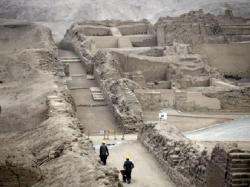 Pachacamac - The Ministry of Culture announced construction of MUNA, what will be Peru’s largest and most modern archaeology museum in the country, will begin in the coming months in the Pachacamac region of Lurin.
Pachacamac - The Ministry of Culture announced construction of MUNA, what will be Peru’s largest and most modern archaeology museum in the country, will begin in the coming months in the Pachacamac region of Lurin.
http://www.peruthisweek.com/news-ministry-of-culture-announces-execution-of-national-museum-of-archaeology-of-peru-108620
INDONESIE –  Bojonegoro - Archaeologists have confirmed that the stone tombs discovered in a teakwood forest in Bojonegoro District, East Java Province contain megalithic remains. Head of Culture Preservation and Development of Bojonegoros Tourism and Culture Office Suyanto said here Tuesday that a team of archaeologists from East Java found at least 10 groups of stone tombs in Tanggir Village, Malo Subdistrict of Bojonegoro. "Based on the study, the stone tombs in Tanggir Village remain untouched, there are still human bodies inside, as well as provisions," Suyanto said. The archaeological survey, which was conducted on Saturday (Jan 17), also found some individual stone tombs scattered in the area. There are also some stone tombs located in Kawengan Village, 15km from Tanggir Village. However, the tombs in Kawengan had been looted and nothing remained inside those tombs. Suyanto said the stone tombs of Tanggir Village are linked to the story of "wong kalang" who had lived in the region. Based on the local history, "wong kalang" were people who worked in the forest in the ancient kingdom. They built the tombs on the higher grounds because they believed it would allow them to be closer to heaven, Suyanto said.
Bojonegoro - Archaeologists have confirmed that the stone tombs discovered in a teakwood forest in Bojonegoro District, East Java Province contain megalithic remains. Head of Culture Preservation and Development of Bojonegoros Tourism and Culture Office Suyanto said here Tuesday that a team of archaeologists from East Java found at least 10 groups of stone tombs in Tanggir Village, Malo Subdistrict of Bojonegoro. "Based on the study, the stone tombs in Tanggir Village remain untouched, there are still human bodies inside, as well as provisions," Suyanto said. The archaeological survey, which was conducted on Saturday (Jan 17), also found some individual stone tombs scattered in the area. There are also some stone tombs located in Kawengan Village, 15km from Tanggir Village. However, the tombs in Kawengan had been looted and nothing remained inside those tombs. Suyanto said the stone tombs of Tanggir Village are linked to the story of "wong kalang" who had lived in the region. Based on the local history, "wong kalang" were people who worked in the forest in the ancient kingdom. They built the tombs on the higher grounds because they believed it would allow them to be closer to heaven, Suyanto said.
http://www.antaranews.com/en/news/102624/archeologists-find-bojonegoros-stone-tombs-megalithic-in-nature?
INDE – 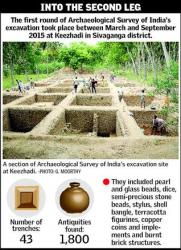 Keezhadi - Having struck gold in the first leg in terms of archaeological finds, the Archaeological Survey of India (ASI) began the second phase of excavation at Pallichanthai Thidai of Keezhadi village in Sivaganga district on Monday. The first phase, which spread from March to September 2015, threw up very interesting antiquities of the Sangam Age. “We have begun the second phase with the encouraging results of the first phase, especially the impressive structural activity. More importantly, the site is very close to the historic city of Madurai and has immense potential to explore the Sangam Age,” said Sathyabama Badrinath, Regional Director (South), ASI, who inaugurated the excavation. She was confident that the archaeologists at the site would be able to link the structures they came across in the first phase in the current exercise. “This will help in further exposing the already exposed structures,” she said. K. Amarnath Ramakrishna, Superintending Archaeologist, said that though a tentative date of third century BC had been fixed for the site, the exact date could be determined only through carbon dating of the antiquities found so far. He was hopeful that carbon dating of about 1800 antiquities found in the first phase would be over in about six months from now. The ASI Director General Rakesh Tewari had approved the second phase till September 2016.
Keezhadi - Having struck gold in the first leg in terms of archaeological finds, the Archaeological Survey of India (ASI) began the second phase of excavation at Pallichanthai Thidai of Keezhadi village in Sivaganga district on Monday. The first phase, which spread from March to September 2015, threw up very interesting antiquities of the Sangam Age. “We have begun the second phase with the encouraging results of the first phase, especially the impressive structural activity. More importantly, the site is very close to the historic city of Madurai and has immense potential to explore the Sangam Age,” said Sathyabama Badrinath, Regional Director (South), ASI, who inaugurated the excavation. She was confident that the archaeologists at the site would be able to link the structures they came across in the first phase in the current exercise. “This will help in further exposing the already exposed structures,” she said. K. Amarnath Ramakrishna, Superintending Archaeologist, said that though a tentative date of third century BC had been fixed for the site, the exact date could be determined only through carbon dating of the antiquities found so far. He was hopeful that carbon dating of about 1800 antiquities found in the first phase would be over in about six months from now. The ASI Director General Rakesh Tewari had approved the second phase till September 2016.
http://www.thehindu.com/news/cities/Madurai/second-phase-of-excavation-begins/article8122751.ece?